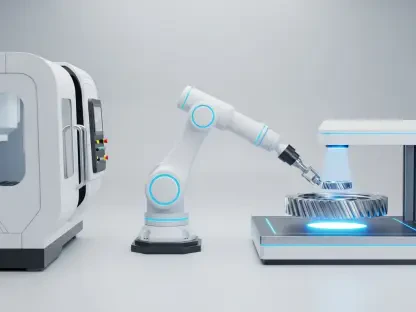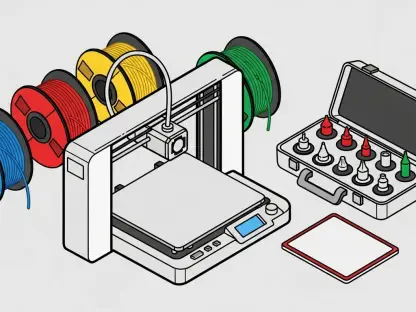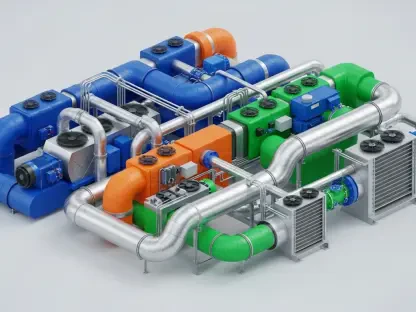The American manufacturing sector, long an economic cornerstone, now faces an acute issue: an alarming skill gap that threatens to derail efforts to revive domestic production. With large-scale government and industry investments in new technologies, there’s a renewed focus on reshoring, the process of bringing manufacturing jobs back to the U.S. The move aims to counteract the supply chain vulnerabilities exposed by the COVID-19 pandemic. However, the lack of skilled labor is proving to be a significant obstacle.
Understanding the Skill Gap
Resurgence of American Manufacturing
Multiple factors are driving the resurgence of American manufacturing. The pandemic underscored the risks associated with global supply chains, prompting businesses to reconsider domestic production. Reshoring enhances quality control, fosters economic growth, and maintains the nation’s leadership in innovative industries. Yet, as companies look to ramp up operations, they find themselves grappling with an insufficient pool of skilled workers. The immediate challenge is to equip the workforce with skills required for modern manufacturing processes, which often involve complex machinery and sophisticated technologies.
The emphasis on reshoring also reflects a broader strategic consideration. By bringing manufacturing back within national borders, companies aim to mitigate risks associated with foreign supply chains, such as geopolitical uncertainties and trade disruptions. However, the absence of qualified workers capable of operating and maintaining advanced manufacturing systems creates a bottleneck. This dual challenge of enhancing operational capabilities and ensuring a skilled workforce is emerging as a critical focal point for policymakers and industry leaders alike.
Talent Shortage in the Industry
The talent shortage is exacerbated by the impending retirement of baby boomers and an insufficient pipeline of adequately trained younger workers. A National Association of Manufacturers Outlook Survey reports that 65% of respondents cite talent shortages as a primary challenge. This deficit could leave nearly two million positions unfilled in the coming years, stunting growth and competitiveness. The dilemma has been further complicated by the rapid pace of technological advancements that require specialized skills not prevalent in the current labor market.
Adding to the pressure is the demographic shift. As seasoned employees retire, taking their extensive experience and expertise with them, the industry faces an urgent need to transfer knowledge to the next generation. However, the younger workforce seems less inclined toward manufacturing careers, often perceiving them as less attractive compared to technology and service industries. Addressing these perceptions and cultivating interest in manufacturing careers will be crucial to bridging the talent gap and making the sector viable for future generations.
Potential Solutions: Upskilling and Reskilling
Leveraging Existing Workforces
Despite the daunting skill gap, the solution might be closer than it seems. Companies can tap into their existing workforces, investing in upskilling and reskilling initiatives to equip current employees with the necessary knowledge and tools. Such programs not only improve business processes but also empower employees, leading to higher job satisfaction and career development prospects. This approach can turn the challenge of a skill gap into an opportunity by promoting a culture of continuous learning and adaptability within the organization.
Additionally, leveraging the existing workforce has the advantage of retaining experienced employees who already understand the company’s operations and ethos. Upskilling initiatives can be tailored to address specific skill gaps, ensuring that essential knowledge and expertise are not lost. In doing so, companies can foster a talent pipeline that is both loyal and skilled, effectively bridging the gap while maintaining operational continuity and efficiency.
Role of Certifications
One standout organization in this area is the American Society for Quality (ASQ). ASQ offers a range of specialized certifications and comprehensive skills frameworks. These certifications, which are internationally recognized, cover disciplines such as Six Sigma, root cause analysis, and Lean methodologies. ASQ’s programs are designed to bridge individual and organizational skills gaps, providing a structured path for employee development. By incorporating such certifications into their upskilling strategies, companies can ensure their workforce meets contemporary manufacturing standards.
Certifications provide employees with a formal acknowledgment of their skills, boosting their confidence and proving their competence to employers. Moreover, certifications ensure that employees have the standardized, high-quality training necessary to meet industry benchmarks. This not only benefits the individual by enhancing their professional profile but also aligns organizational capabilities with market demands. ASQ’s certifications, in particular, are known for their rigorous standards, making them a gold standard within the sector.
The Importance of Certifications
Certification vs. Certificates
It’s crucial to understand the difference between certifications and certificates. Certification represents a formal acknowledgment of proficiency in a specified body of knowledge by a reputable organization. This typically involves passing rigorous exams and demonstrating expertise. Conversely, certificates often indicate completion of a course without standardized validation. ASQ’s ISO 17024-accredited certifications offer a higher level of credibility, boosting both employee confidence and employer trust.
Employers increasingly recognize the value of certification as a mark of verified skill and professionalism. Certified employees can immediately demonstrate their qualifications, reducing the uncertainty and risk associated with hiring and training new staff. Meanwhile, employees with certifications enjoy greater job security and opportunities for advancement. This dynamic not only aligns individual career growth with organizational objectives but also fosters a mutually beneficial environment where skills and standards are consistently elevated.
Organizational Benefits
The widespread adoption of certification programs can lead to substantial organizational benefits. Certified employees contribute to higher quality outcomes and improved customer satisfaction by maintaining consistent standards and processes. This, in turn, enhances customer loyalty and trust, augments overall organizational value, and bolsters global competitiveness. Certification also helps future-proof businesses against evolving industry standards and emerging challenges. Through continuous improvement and compliance, certifications ensure that organizations can adapt and thrive in a dynamic marketplace.
Additionally, certification programs serve as a strategic tool for talent management. They provide a clear framework for career progression and skill development, enabling organizations to identify and cultivate internal talent efficiently. This proactive approach to talent management not only addresses the immediate skill gap but also positions the organization for long-term success. By investing in certification, companies can create a resilient, skilled, and motivated workforce capable of driving innovation and growth.
Employee Engagement and Satisfaction
Encouraging Employee Loyalty
Professional certifications have a considerable positive impact on employee engagement and satisfaction. Engagement surveys indicate that employees who feel invested in by their employers exhibit higher loyalty, reduced turnover, and enhanced productivity. As employees gain new skills and validation through certifications, they are more likely to stay committed to their employers. This mutual commitment leads to a more stable and motivated workforce, driving overall organizational success.
Furthermore, the sense of achievement and recognition that comes with certification significantly boosts employee morale. Knowing that they have achieved a high standard of proficiency not only increases their confidence but also their attachment to the company. This emotional engagement is crucial for retaining top talent in an increasingly competitive job market. Companies that prioritize employee development, therefore, enjoy the dual benefits of lower turnover rates and higher operational efficiency.
Better Pay and Advancement Opportunities
Certified employees often enjoy better pay and advancement opportunities. ASQ’s annual Quality Progress Salary Survey consistently shows a positive correlation between certification and higher salary brackets. This not only improves employee morale but also serves as an incentive for continuous learning and professional growth. By aligning financial rewards with skill development, companies can foster an environment that encourages lifelong learning and mastery of advanced manufacturing techniques.
Higher pay and career advancement are not just perks but strategic enablers. They help retain high-performing employees who might otherwise seek opportunities elsewhere. Providing clear pathways for career growth through certification and upskilling not only meets employees’ aspirations but also ensures that the organization retains the expertise needed to stay competitive. In this way, certification becomes a cornerstone of both individual development and organizational agility.
Strategic Implementation of Training Programs
Importance of Continuous Professional Development
For American manufacturing to thrive, continuous professional development must be prioritized. Companies should provide ongoing training opportunities to keep pace with technological advancements. This approach ensures that the workforce remains adaptable and skilled, capable of meeting modern manufacturing demands. By embedding a culture of lifelong learning, organizations can stay ahead of industry trends and mitigate the risks posed by skill obsolescence.
Additionally, continuous professional development helps companies respond to market changes with agility. Whether it’s new production techniques, emerging technologies, or shifts in consumer demand, a well-trained workforce can pivot swiftly and efficiently. This adaptability not only enhances company performance but also solidifies its reputation as an industry leader. Therefore, investing in continuous learning is not just beneficial; it is essential for sustaining long-term success in the manufacturing sector.
Collaborative Efforts
The American manufacturing sector, historically a cornerstone of the economy, is currently grappling with a critical issue: a significant skill gap that threatens the resurgence of domestic production. This revival effort is fueled by large-scale investments from both government and industry in cutting-edge technologies. These investments are crucial for reshoring, the strategic initiative of bringing manufacturing jobs back to the United States. The motivation behind reshoring has intensified following the COVID-19 pandemic, which exposed numerous vulnerabilities in global supply chains.
However, the crux of the challenge lies in the shortage of skilled labor—a factor that could derail these revitalization efforts. As industries adopt advanced manufacturing technologies, the demand for a workforce proficient in these new skills has skyrocketed. Unfortunately, the current labor pool falls short of meeting these demands, creating a mismatch that could hinder progress.
Addressing this skills gap is imperative for the future of American manufacturing. Solutions include ramping up vocational training programs, forging stronger partnerships between educational institutions and industries, and investing in continuous learning opportunities for workers. If these measures are successfully implemented, the sector could not only overcome the immediate challenges but also pave the way for a more robust, resilient manufacturing landscape in the United States.









